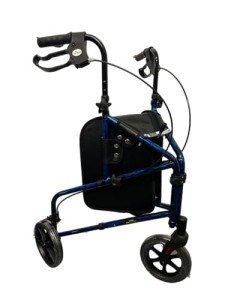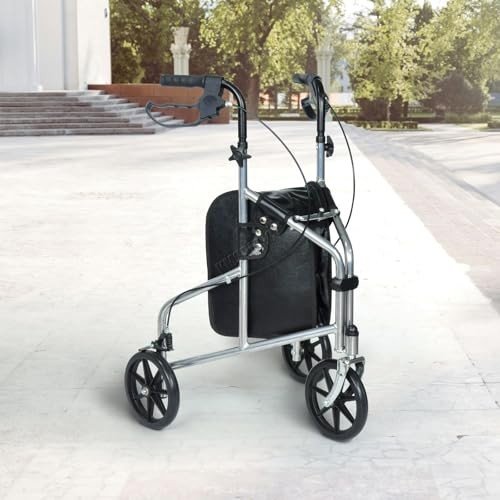
Affordable Rollator
Add a review FollowOverview
-
Founded Date November 24, 1980
-
Sectors Education Training
-
Posted Jobs 0
-
Viewed 42
Company Description
What’s The Job Market For Walking Frame Professionals?
Understanding Walking Frames: Features, Benefits, and Considerations
Walking frames, likewise referred to as walkers, are necessary mobility aids created to provide stability and assistance for individuals who may struggle with balance, coordination, or strength when moving. These gadgets can substantially improve the quality of life for the elderly, people recovering from surgery, and those with chronic health conditions impacting mobility. This short article will dig into the various types of walking frames, their benefits, proper usage, and essential factors to consider for mymobilityscooters.uk users and caregivers.
Types of Walking Frames
Walking frames come in several variations to accommodate different user requirements. The main types include:
-
Standard Walking Frames: These are basic freestanding frames that supply optimal stability. Users must raise the frame with each action, making them suitable for people with excellent upper body strength.
-
Two-Wheeled Walkers: These frames have 2 front wheels, enabling smoother movement. They are perfect for users who can handle some weight-bearing and need less lifting.
-
Four-Wheeled Walkers (Rollators): Designed with 4 wheels, a seat, and hand brakes, rollators use convenience and Walker With Seat safety. Users can walk without raising the frame, making them suitable for those with limited stamina or strength.
-
Knee Walkers: These are created for individuals recuperating from foot or ankle injuries. Users rest their knee on a padded cushion while pressing themselves forward with their other leg.
Table 1: Comparison of Walking Frame Types
| Walking Frame Type | Highlight | Best Suited For |
|---|---|---|
| Standard Walking Frame | No wheels; needs raising | Users with good upper body strength |
| Two-Wheeled Walker | Front wheels; simpler maneuvering | Users needing moderate assistance |
| Four-Wheeled Walker | Wheels, seat, brakes | Users requiring stability and rest options |
| Knee Walker | Padded knee rest; mobile | Users with lower leg injuries |
Benefits of Using Walking Frames
Walking frames offer various benefits that improve mobility and promote independence. These benefits consist of:

-
Increased Stability: Walking frames supply a steady platform, reducing the risk of falls.
-
Improved Confidence: By using support, users can feel more safe and secure while walking, which boosts their self-confidence in mobility.
-
Flexible Use: Walking frames can be utilized inside your home and outdoors, accommodating numerous surface areas and environments.
-
Decreased Physical Strain: They alleviate the physical concern on the user’s legs and back, enabling people with pain or weak point to walk longer ranges.
-
Motivation of Physical Activity: Regular use can promote mobility and aid maintain exercise, which is important for total health.
Key Considerations for Users and Caregivers
While walking frames provide significant benefits, there are a number of crucial considerations to ensure optimum use:
-
Proper Fit: Walking frames must be gotten used to the correct height for the user. When standing directly, the elbows ought to be a little bent when holding the deals with.

-
Weight Capacity: Each Homecraft Walker Trolley: Wheels & Trays for Ease has an optimum weight limit. Users ought to ensure they pick a walking frame that can sufficiently support their weight.
-
Terrain Suitability: Users need to consider where they will mostly use the walker. Four-wheeled walkers are much better fit for outdoor use on uneven surfaces.
-
Maintenance: Regular examine brakes, wheels, and structural integrity are essential to guarantee safety.
-
User Training: Proper training from healthcare experts can help users and caregivers understand how to use walking frames securely and Mobility Aid successfully.
FAQs about Walking Frames
-
Who can benefit from utilizing a walking frame?
- People with balance issues, elderly people, those recuperating from surgery, and those with persistent mobility problems can take advantage of using walking frames.
-
Can walking frames be used outdoors?
- Yes, many walking frames, particularly four-wheeled walkers, are developed for both indoor and outdoor use.
-
How do I choose the right walking frame?
- Consider your mobility requires, environment, weight capability, and any extra functions like seats or storage compartments.
-
What should I do if I feel unstable utilizing a walking frame?
- Talk to a health care professional or physical therapist for guidance on proper use and change of the walking frame.
-
Are there any risks related to utilizing a walking frame?
- If not used correctly, walking frames might result in falls. It’s essential to make sure proper fit, change them properly, and practice safe walking strategies.
Walking frames represent an important tool for increasing mobility and self-reliance for numerous people facing physical challenges. By comprehending the different types available, their benefits, and the factors to consider included in their use, users and caretakers can make educated choices about choosing and making use of the right walking frame. With the ideal support, lots of people can restore self-confidence in their mobility, enhance their quality of life, and take important actions towards self-reliance.


